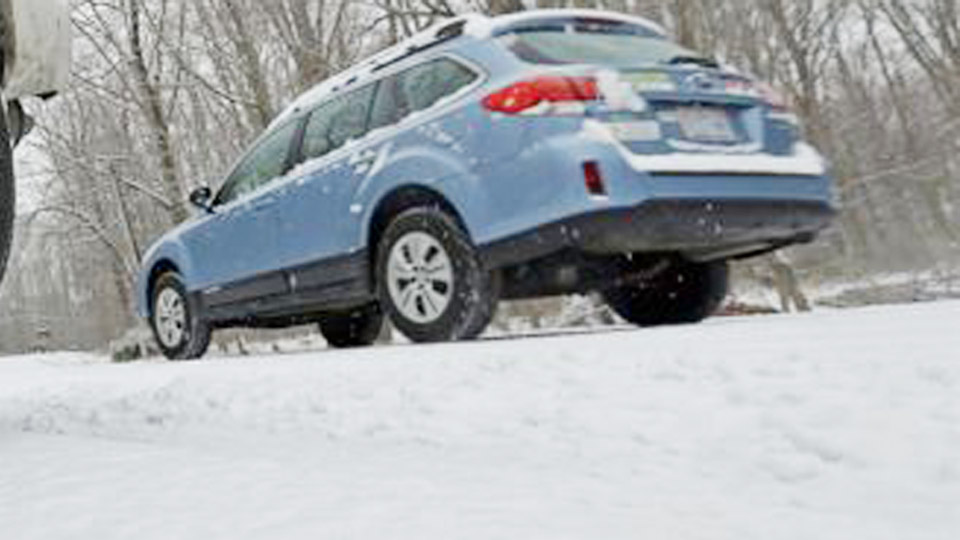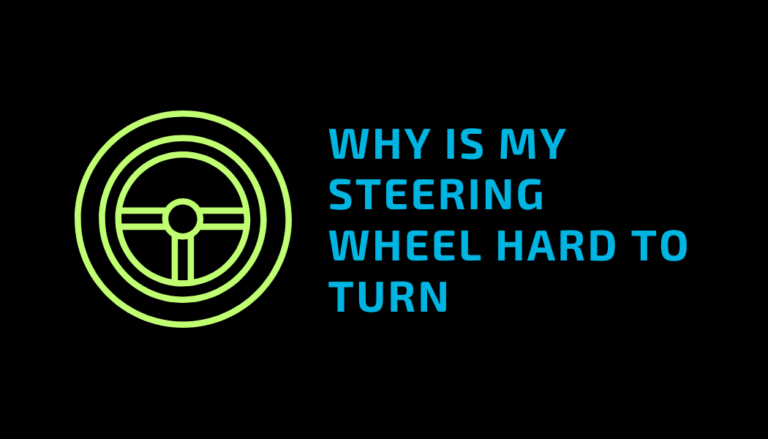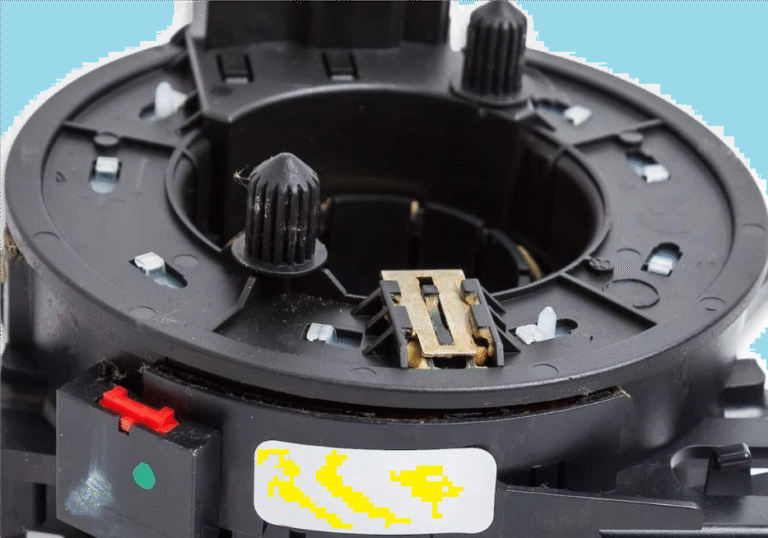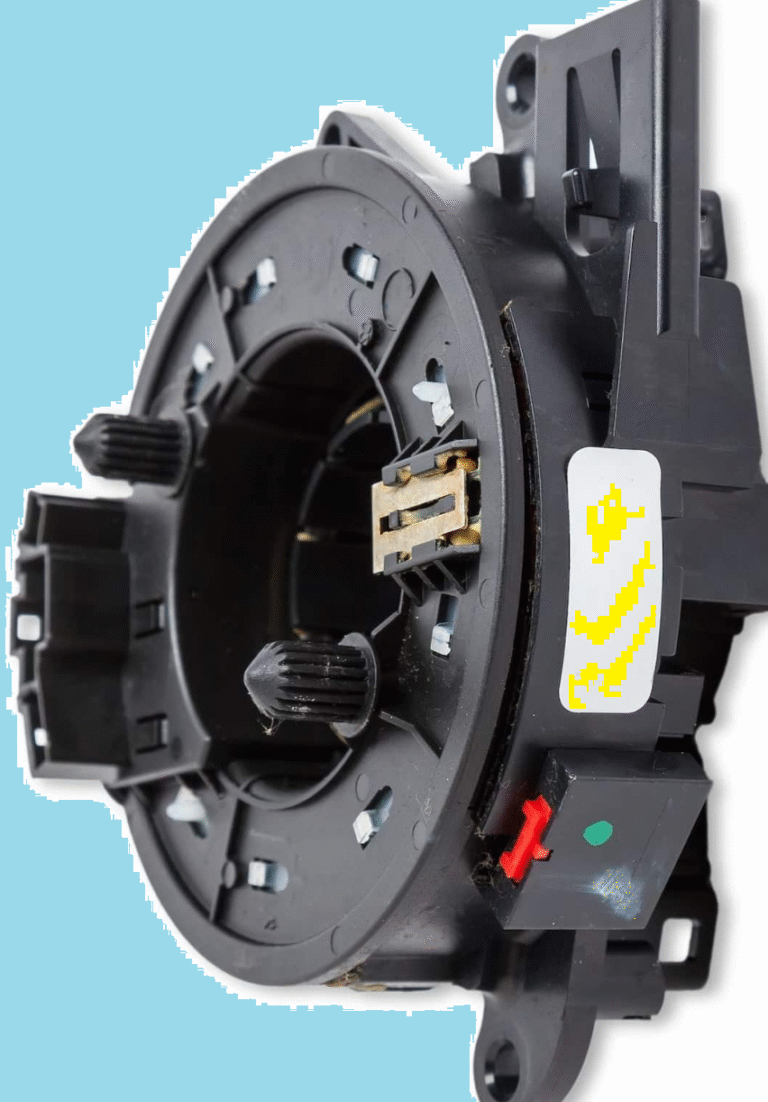Winter driving can be a challenge, especially when you’re navigating icy roads and your steering wheel suddenly feels loose, like it’s not responding the way it should. If you’re asking yourself, why does my steering wheel feel loose in the snow?, you’re not alone. As a car enthusiast who’s spent years wrenching on my Dodge Ram and helping friends with their Subarus and Fords in snowy Midwest winters, I’ve dealt with this issue firsthand.
A loose steering wheel in snow can make driving nerve-wracking, but it’s often a fixable problem tied to your car’s steering system, tires, or winter conditions. Let’s break down why this happens, how to diagnose it, and what you can do to get your steering tight and responsive again, whether you’re plowing through Minnesota blizzards or skidding along Colorado’s backroads.

Image by mytwintiers
Understanding Your Car’s Steering System
To figure out why your steering feels loose in snow, you need to know how your steering system works. Most modern cars use either hydraulic power steering, electric power steering, or a hybrid of the two. Hydraulic systems rely on a pump and fluid to assist steering, while electric systems use motors and sensors. Both connect the steering wheel to the front wheels via a steering rack or gearbox, with components like tie rods, bushings, and ball joints keeping everything aligned.
In snowy conditions, these systems face extra stress. Snow and ice reduce tire grip, making the wheels harder to control, which can feel like “looseness” in the steering wheel. Worn parts or improper maintenance amplify this, especially in harsh US winters where road salt and cold temperatures wreak havoc. I learned this when my old Chevy Silverado felt like it was floating on an icy road—turns out, worn tie rod ends were making the steering sloppy.
Why It Matters: Loose steering reduces control, especially on slippery surfaces, increasing the risk of skids or accidents. Fixing it restores confidence and safety.
Common Causes of Loose Steering in Snow
A loose steering wheel in snow can stem from several issues, often related to winter conditions or underlying mechanical problems. Here’s what I’ve seen in my garage and on the road.
Reduced Tire Traction
Snow and ice lower tire grip, making the wheels slip or slide instead of turning precisely. This can feel like the steering wheel isn’t responding, especially with all-season tires not suited for snow.
Real-World Example: My buddy’s Toyota Camry felt loose last winter in Ohio. His worn all-season tires were the culprit—switching to snow tires tightened things up.
Worn Steering Components
Parts like tie rod ends, ball joints, or control arm bushings wear out over time. In snow, these loose parts exaggerate the steering’s sloppiness, as the wheels struggle to follow your inputs.
Low Power Steering Fluid
For hydraulic systems, low or contaminated fluid reduces steering assist, making the wheel feel vague or heavy. Cold weather thickens fluid, worsening the issue.
Misaligned Wheels
Snowy roads hide potholes, which can knock your wheels out of alignment. Misalignment causes the car to pull or wander, mimicking loose steering.
Snow or Ice Buildup
Snow can pack into wheel wells or under the car, interfering with steering components. Ice on tires or suspension parts can also throw off balance and responsiveness.
| Cause | Symptoms | Fix |
|---|---|---|
| Reduced Tire Traction | Slipping, vague steering | Install snow tires, check tread |
| Worn Steering Components | Clunking, play in wheel | Replace tie rods, bushings |
| Low Power Steering Fluid | Whining, heavy steering | Top off or flush fluid |
| Misaligned Wheels | Pulling, uneven tire wear | Get a wheel alignment |
| Snow/Ice Buildup | Vibration, uneven steering | Clear snow from wheel wells |
Diagnosing Loose Steering in Snow
Pinpointing the cause is the first step to fixing it. Here’s how I diagnose loose steering in my driveway, tailored for DIYers.
Step 1: Check Tire Condition
Inspect your tires for tread depth (at least 6/32-inch for snow) using a penny test—Lincoln’s head should be partly covered when inserted upside down. Look for uneven wear or ice buildup.
Step 2: Test Steering Play
With the engine off, turn the steering wheel side to side. More than an inch of free play before the wheels move suggests worn components like tie rods or a steering rack.
Step 3: Inspect Under the Car
Jack up the front end and check for loose parts. Grab each front wheel at 3 and 9 o’clock and wiggle it. Any clunking or movement points to worn tie rods or ball joints. Check bushings for cracks or softness.
Step 4: Check Power Steering Fluid
Pop the power steering reservoir cap (usually near the pump). The fluid should be clean, red (or clear), and at the “full” mark. Low or dirty fluid can cause loose or heavy steering.
Step 5: Drive Test
Take a short drive on a safe, snowy road. Note if the looseness worsens during turns, braking, or acceleration. If the car pulls to one side, alignment is likely off.
Pro Tip: If you’re not sure what’s loose, mark components with chalk and check for movement after a drive. I did this on my Ram and found a wobbly tie rod end in minutes.
Fixing Loose Steering in Snow
Once you’ve identified the issue, here’s how to fix it. These are practical solutions I’ve used, designed for US drivers and climates.
Installing Snow Tires
If traction is the problem, snow tires are a game-changer. Here’s how to choose and install them:
- Pick the Right Tires: Look for winter tires with the Three-Peak Mountain Snowflake symbol (e.g., Bridgestone Blizzak, Michelin X-Ice). Check your car’s tire size in the owner’s manual.
- Mount the Tires: Use a jack to lift each corner, remove the old tires, and install the snow tires. Torque lug nuts to spec (usually 80–100 ft-lbs).
- Balance and Align: Take the car to a shop for balancing and alignment to prevent uneven wear.
- Store Summer Tires: Keep all-season or summer tires in a cool, dry place to extend their life.
Cost: $400–$1,000 for a set of four, depending on size and brand.
My Experience: Switching to Blizzaks on my wife’s CR-V transformed winter driving. The steering went from vague to precise, even in deep snow.
Replacing Worn Steering Components
Worn tie rods or bushings need replacement. Here’s a DIY guide for a tie rod end:
- Lift the Car: Use jack stands to raise the front end.
- Remove the Wheel: Loosen lug nuts and remove the tire.
- Disconnect the Tie Rod: Remove the cotter pin and castle nut, then use a pickle fork or puller to separate the tie rod end from the steering knuckle.
- Install New Tie Rod: Screw in the new tie rod end, tighten the nut, and insert a new cotter pin. Repeat on the other side.
- Align the Wheels: Get a professional alignment to ensure proper tracking.
Cost: $50–$150 per tie rod end, plus $80–$120 for alignment.
Warning: Don’t drive with loose steering components—worn parts can fail completely, causing loss of control.
Flushing Power Steering Fluid
Low or dirty fluid can make steering feel loose. Here’s how I flush it:
- Drain Old Fluid: Place a pan under the pump, disconnect the return hose, and let the fluid drain.
- Clean Reservoir: Wipe out debris with a lint-free cloth.
- Refill with New Fluid: Use the correct fluid (e.g., Dexron III for GM, ATF+4 for Chrysler). Fill to the “full” mark.
- Bleed the System: With the front wheels off the ground, turn the steering wheel lock-to-lock 10–15 times with the engine off. Start the engine and repeat until the fluid is clear and quiet.
Cost: $15–$30 for fluid.
Getting a Wheel Alignment
Misalignment causes loose steering and uneven tire wear. Take your car to a shop with a laser alignment machine. They’ll adjust camber, caster, and toe to factory specs.
Cost: $80–$150, depending on location.
Real-World Tip: After hitting a pothole in a Wisconsin snowstorm, my Ram’s steering felt off. A $100 alignment fixed it and saved my tires from premature wear.
Clearing Snow and Ice Buildup
Snow in wheel wells can throw off steering. Here’s how to clear it:
- Park in a Warm Spot: If possible, park in a garage to melt snow naturally.
- Use a Brush: Sweep snow from wheel wells and under the car with a soft broom.
- Scrape Ice: Use a plastic scraper to remove ice from tires and suspension parts.
- Check Alignment: If steering still feels loose, get an alignment.
Cost: $0–$10 for a brush/scraper.
| Fix | Time | Cost | Difficulty |
|---|---|---|---|
| Install Snow Tires | 2–3 hours | $400–$1,000 | Moderate |
| Replace Tie Rod Ends | 2–4 hours | $100–$300 | Advanced |
| Flush Fluid | 30–45 min | $15–$30 | Easy |
| Wheel Alignment | 1 hour | $80–$150 | Professional |
| Clear Snow/Ice | 15–30 min | $0–$10 | Easy |
Choosing the Right Snow Tires
Snow tires are critical for winter steering control. Here’s what to look for:
- Tread Pattern: Deep, siped treads (e.g., Nokian Hakkapeliitta) grip snow better.
- Size: Match your car’s tire size (check the sidewall or manual).
- Compound: Soft rubber compounds stay flexible in cold, unlike all-season tires.
- Brand: Bridgestone, Michelin, and Nokian are top picks for US winters.
My Pick: Michelin X-Ice Snow tires ($600 for a set) have been flawless on my Ram, offering crisp steering even in deep snow.
Maintenance Tips for Winter Steering
Keep your steering tight with these habits, tailored for US winters:
- Check Tires Monthly: Ensure tread depth and pressure (add 2–3 psi in cold weather).
- Inspect Steering Components: Look for wear annually, especially before winter.
- Flush Fluid Every 2 Years: Fresh fluid prevents sluggish steering in cold temps.
- Clear Snow After Storms: Remove buildup from wheel wells to avoid interference.
- Warm Up the Car: Let the engine run for a minute before driving to warm fluid and components.
Real-World Example: On my CR-V, I skipped a fluid flush for three years. In a Minnesota winter, the steering felt heavy until I flushed it—$20 and 30 minutes saved the day.
Winter Driving Tips for US Conditions
Snowy US roads vary from icy New England streets to slushy Pacific Northwest highways. Here’s how to keep steering responsive:
Northeast (e.g., Vermont): Deep snow and ice demand snow tires and frequent wheel well cleaning.
Midwest (e.g., Michigan): Salt and potholes wear components fast. Inspect tie rods and align wheels regularly.
Mountain West (e.g., Colorado): Steep, icy roads need grippy tires and precise alignment.
South (e.g., North Carolina): Occasional snow still requires winter prep—don’t rely on all-seasons.
Common Mistakes to Avoid
- Using All-Season Tires: They harden in cold, reducing grip and making steering feel loose.
- Ignoring Small Play: A little looseness can worsen in snow, leading to dangerous handling.
- Skipping Alignment: Misaligned wheels amplify looseness on slippery roads.
- Driving Aggressively: Sharp turns in snow strain components. Drive smoothly to preserve steering.
Conclusion
A loose steering wheel in snow is more than an annoyance—it’s a safety concern that can make winter driving stressful. Whether it’s worn components, poor traction, or fluid issues, you can restore precise steering with the right fixes. Snow tires, regular maintenance, and careful driving will keep you in control, no matter how brutal the US winter gets. Grab a wrench, check your tires, and hit the road with confidence.
Pro Tip: Keep a tire pressure gauge and a small snow brush in your glovebox. Quick checks after a storm can prevent steering issues before they start.
FAQ
Why does my steering wheel feel loose only in snow?
Snow reduces tire traction, making steering feel vague. Worn components or misalignment can worsen this. Install snow tires and check steering parts.
Can I drive with a loose steering wheel?
It’s risky, especially in snow. Loose steering reduces control, increasing the chance of skids. Diagnose and fix the issue ASAP.
How often should I replace steering components?
Tie rods and bushings last 70,000–100,000 miles, but check annually in snowy regions where salt and potholes accelerate wear.
Are snow tires worth it for occasional snow?
Yes, snow tires improve steering response and safety even for light snow. They’re a must if you drive in icy conditions.
How do I know if my steering needs alignment?
If your car pulls to one side or the steering wheel is off-center, get an alignment. It’s critical for precise steering in snow.




